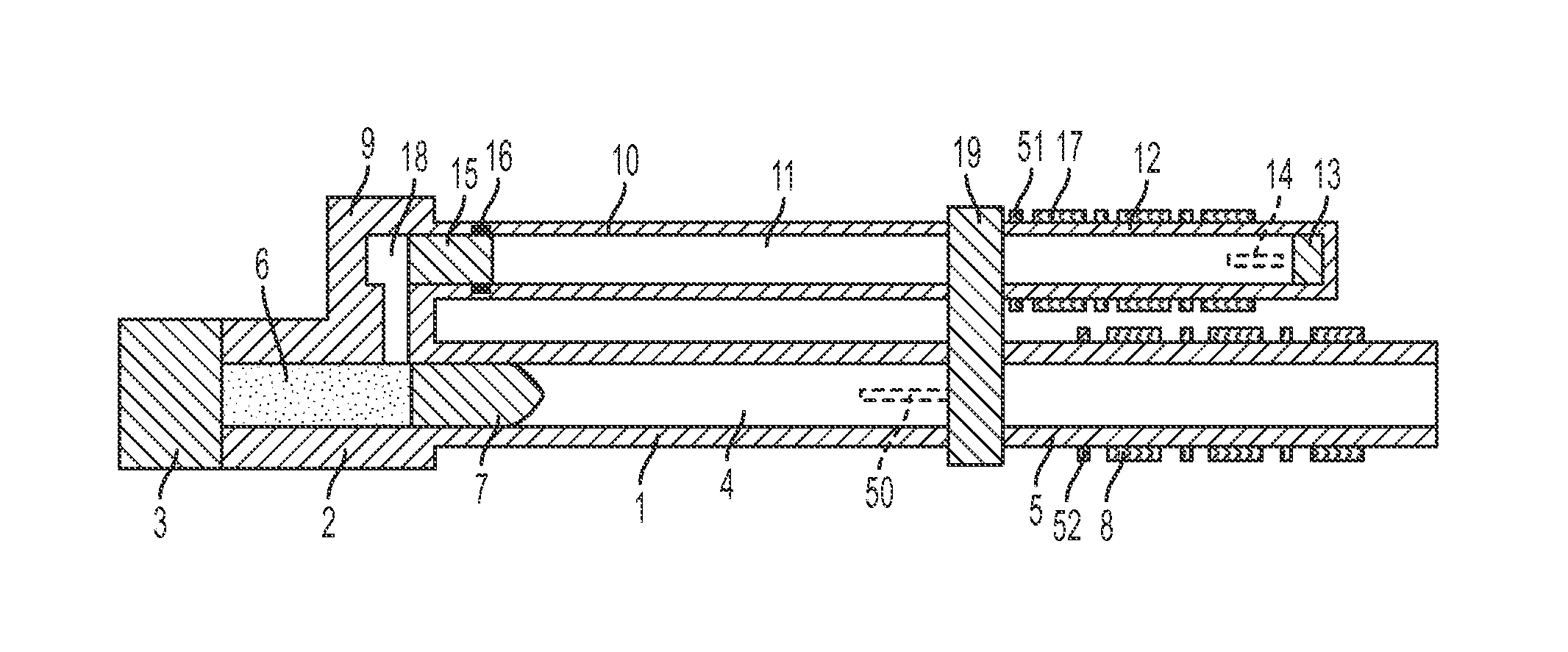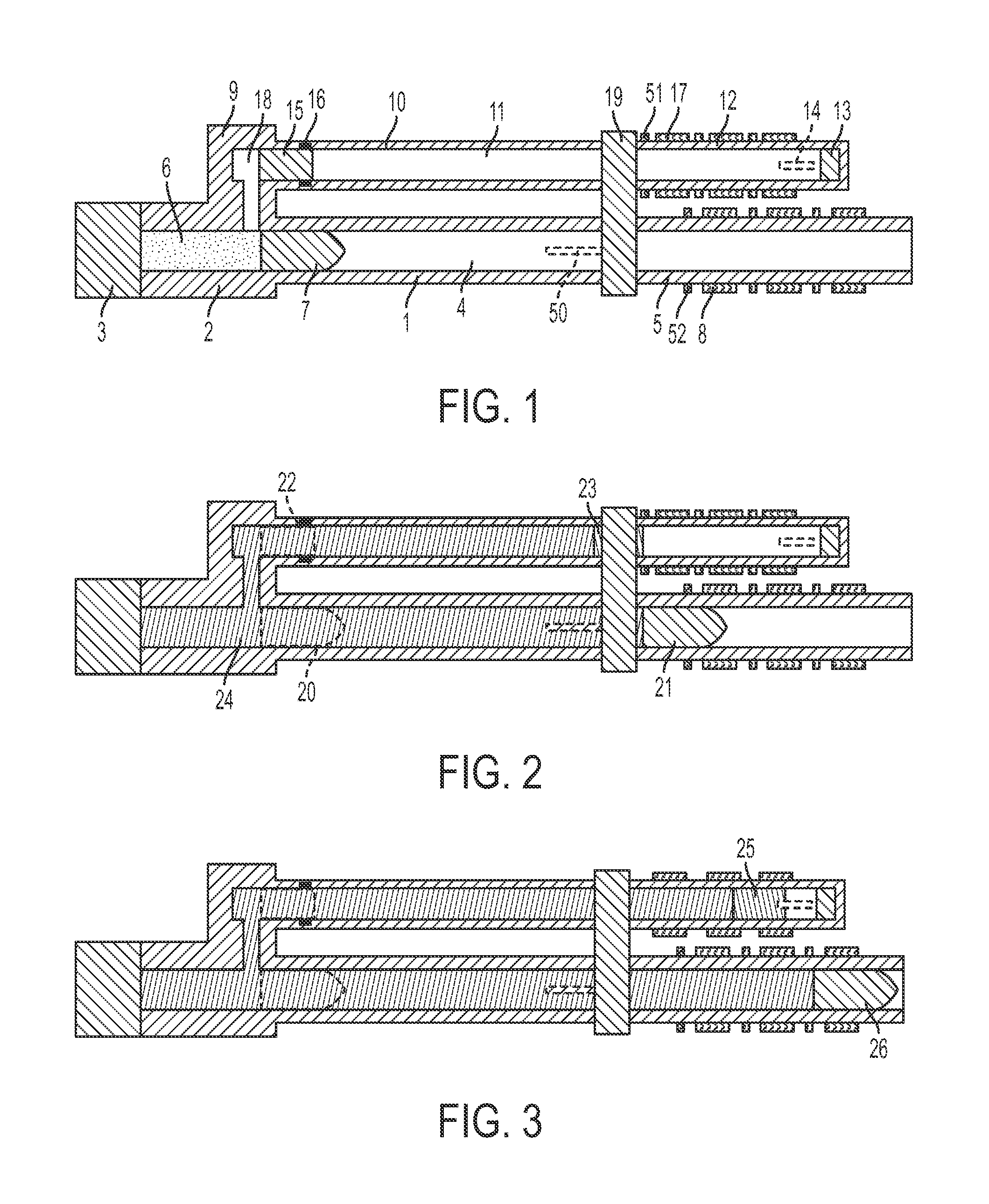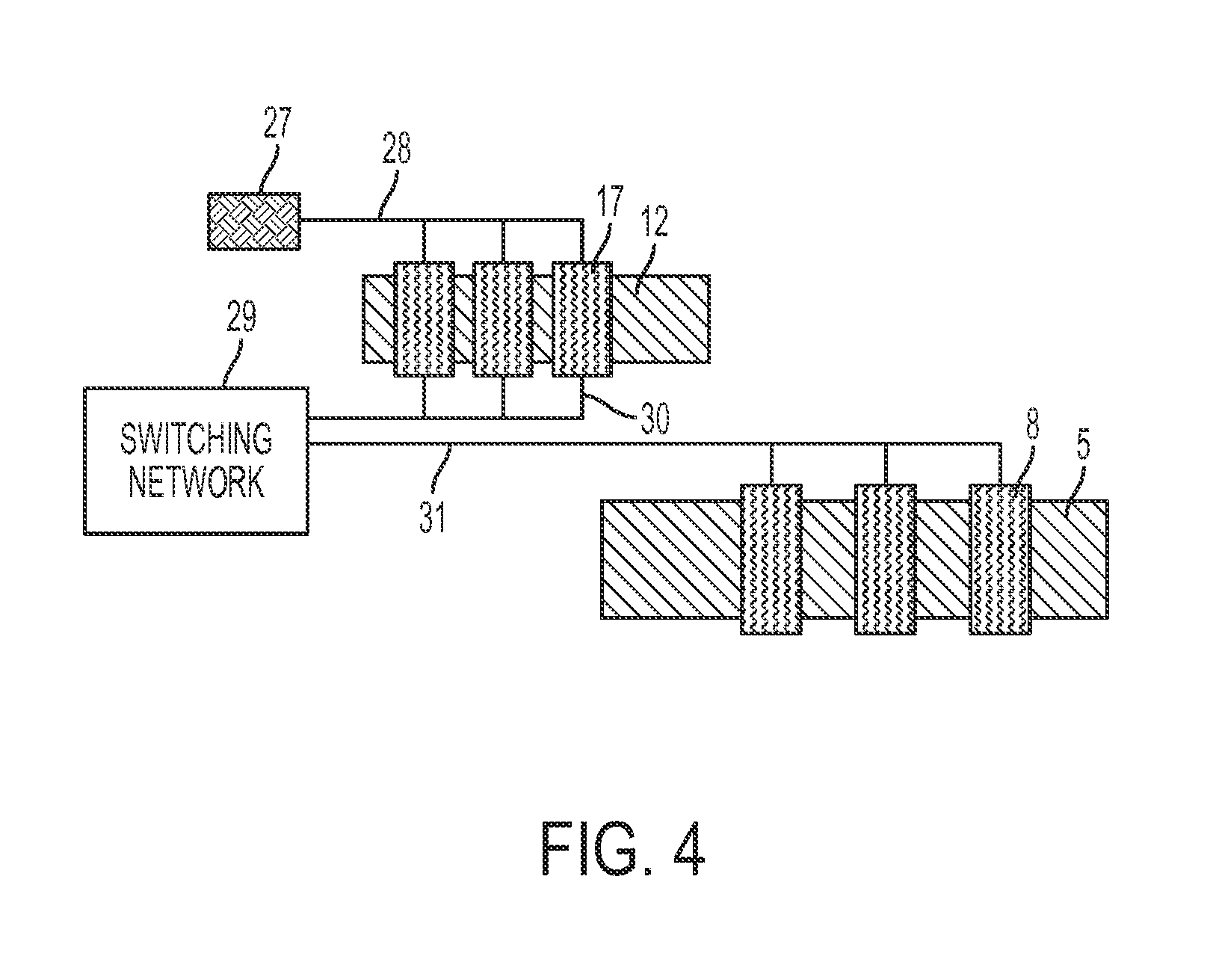Hybrid propellant electromagnetic gun system
a propellant electromagnetic and gun system technology, applied in the field of hybrid propellant electromagnetic gun systems, can solve the problems of limited propellant mass, single or multiple windings of coils, insufficient acceleration to provide large acceleration, and limited final velocity of projectiles, etc., to achieve increased projectile velocity, high blast level, and more energetic propellant
- Summary
- Abstract
- Description
- Claims
- Application Information
AI Technical Summary
Benefits of technology
Problems solved by technology
Method used
Image
Examples
Embodiment Construction
[0036]The basic components of a hybrid gun device for launching projectiles according to the invention are shown in FIGS. 1-4. The device includes a main barrel with breech, auxiliary barrel with breech, cartridge case of propellant, driver mass, projectile, deceleration and acceleration coils stages, an electrical switching network, and an external electrical source unit to supply a starting current for the coil stages along the auxiliary barrel.
[0037]As shown, the main gun portion of the system has a main barrel 1, a breech section 2 that houses the main barrel 1, a breechblock 3, a main barrel hollow core, or bore, 4 open at both ends, and a main barrel extension 5. The hollowed volume of the breech section 2 is filled with propellant 6. The main barrel breech 2 contains a projectile 7. Surrounding main barrel extension 5 are acceleration coil stages 8 and projectile position sensors 52. In addition, connected to the breech section 2 is an auxiliary breech section 9 to which auxi...
PUM
 Login to View More
Login to View More Abstract
Description
Claims
Application Information
 Login to View More
Login to View More - R&D
- Intellectual Property
- Life Sciences
- Materials
- Tech Scout
- Unparalleled Data Quality
- Higher Quality Content
- 60% Fewer Hallucinations
Browse by: Latest US Patents, China's latest patents, Technical Efficacy Thesaurus, Application Domain, Technology Topic, Popular Technical Reports.
© 2025 PatSnap. All rights reserved.Legal|Privacy policy|Modern Slavery Act Transparency Statement|Sitemap|About US| Contact US: help@patsnap.com



